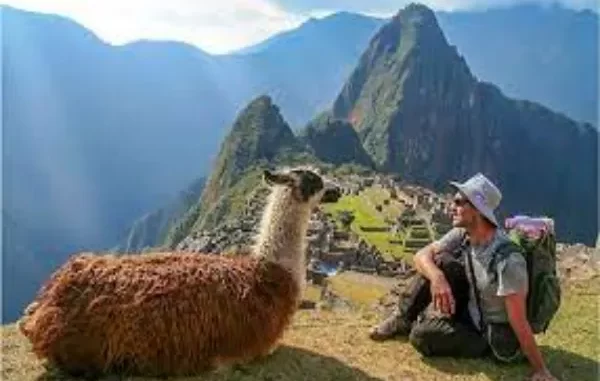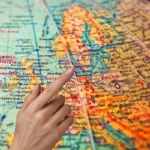
Uncovering the Ancient History of Peru
Peru is a country with a rich and ancient history, stretching back thousands of years. Evidence of human habitation in the region dates back to as early as 12,000 BC. Pre-Inca civilizations flourished in this area, leaving behind an extensive legacy of archaeological sites, artifacts, and ruins.
The oldest known civilization in Peru is the Norte Chico culture, which developed along the Peruvian coast between 3500 and 1800 BC. This culture is most famous for its large-scale irrigation systems, which are some of the earliest known examples of such engineering.
The next major civilization to arise in Peru was the Chavin culture, which was centered in the Andean highlands and flourished from around 1000 BC to 200 BC. The Chavin were a religious people, and their artwork and architecture often featured religious symbolism. They were also known for their skillful metalworking and pottery techniques.
Between 200 BC and 800 AD, the Moche civilization was dominant in Peru. The Moche were highly advanced in terms of architecture and engineering, and their cities featured elaborate canals, aqueducts, and pyramids. They are also known for their elaborate art, which featured intricate designs and motifs.
The Wari civilization rose to prominence in Peru from around 600 AD to 1100 AD. The Wari were a powerful and dominant culture, and their influence can be seen in many aspects of modern Peruvian culture. The Wari are most famous for their extensive road system, which connected cities across the region.
The Inca civilization was the last major civilization to arise in Peru. From around 1400 AD to 1532 AD, the Inca built an extensive empire that stretched from modern day Ecuador to Chile. The Inca are most famous for their engineering feats, such as the construction of Machu Picchu and the development of an efficient road system.
Peru’s ancient history is a testament to the sophistication and creativity of pre-Columbian civilizations. From the Norte Chico to the Inca, these civilizations left behind a rich legacy of culture and architecture, which still influences modern Peruvian culture today.
Exploring Peru’s Rich Cultural Heritage
Peru is a country with an incredibly rich cultural heritage. From pre-Columbian civilizations to colonial influences, Peru has a deep and complex history. Here we explore some of the many aspects of Peru’s cultural heritage.
Pre-Columbian Civilizations
The first civilizations in Peru, the Norte Chico, date back to 3500 BC. This was followed by the Moche, Chimu, and Nazca cultures, and eventually, the Inca Empire. Each of these cultures had their own unique aspects, and left behind a wealth of archaeological evidence to be studied today.
Colonial Era
The colonial period of Peru began in the late 16th century with the arrival of the Spanish. This period saw the introduction of Christianity, as well as Spanish customs and language. It also saw the development of a baroque and rococo style of art and architecture that is still visible today.
Modern Peru
In the modern era, Peru has seen the emergence of a vibrant culture with influences from both pre-Columbian and colonial times. Music, art, and cuisine are all heavily influenced by Peru’s rich history. Additionally, the country is home to many different languages, including Spanish, Quechua, and Aymara.
Peru’s cultural heritage is a testament to its long and complex history. From ancient civilizations to the modern day, Peru has something to offer to visitors of all ages and backgrounds. Exploring Peru’s cultural heritage is a great way to learn more about its unique culture and history.
The Beauty of Peru’s Natural Landscape
Peru is a country known for its stunning landscapes, from the towering Andes Mountains to the lush Amazon rainforest. It is a place of breathtaking beauty, with a vast array of plant and animal life, and a variety of landscapes that range from deserts to snow-capped mountains and tropical jungles.
The Andes Mountains, stretching from north to south, are the longest mountain range in the world. They are home to numerous species of plants and animals, as well as some of the most breathtaking scenery on the planet. The snow-capped peaks of the Andes are a sight to behold, with their stark beauty and ruggedness.
The Amazon rainforest is another marvel of Peru’s natural landscape. This vast expanse of lush rainforest is home to an incredible diversity of life, including endangered species such as the jaguar and giant river otter. The ecosystem of the Amazon is incredibly complex, with its intricate web of plants, animals and microbes.

The coastline of Peru is also home to a stunning array of natural beauty. From the stunning beaches of the north to the rocky cliffs of the south, the Peruvian coastline is a perfect example of biodiversity. There are many endangered species here, including sea turtles, dolphins, whales and sharks.
Lastly, the deserts of Peru are home to some of the most spectacular landscapes in the world. From the world’s highest sand dunes in the Ica Desert to the unique formations of the Atacama Desert, the desert landscapes of Peru are a sight to behold.
Peru is a country brimming with natural beauty. From the towering Andes Mountains to the lush Amazon rainforest, from the stunning beaches of the north to the rugged deserts of the south, Peru’s natural landscapes are truly a sight to behold.
Discovering the Wonders of Peruvian Cuisine
Peruvian cuisine is an exciting and vibrant blend of influences from around the world. With a long history of diversity and a wide range of ingredients, Peruvian cooking has something to offer everyone. From ceviche to lomo saltado, the flavors and aromas of Peruvian cuisine are sure to tantalize your taste buds.
The first thing to know about Peruvian cuisine is that it is highly diverse. Influences from Spain, China, Japan, Italy, and Africa have all made their mark on the country’s culinary traditions. As a result, you can find dishes that are both familiar and unique. From potatoes and corn to quinoa and yucca, the ingredients used in Peruvian cooking provide a wealth of flavor and nutrition.
One of the most popular dishes in Peru is ceviche. This traditional seafood dish is made with fish, onions, garlic, chilies, and lime juice. It is light, refreshing, and packed with flavor. Lomo saltado is another classic, and it is a stir-fry made with beef, peppers, onions, potatoes, and a flavorful sauce.
Peru is also famous for its soups. Locro de papa is a hearty potato soup that is often served with cheese. Sopa a la criolla is a flavorful broth with beef, potatoes, and aji amarillo, a yellow pepper. Chupe de camarones is a creamy shrimp soup that is usually garnished with boiled egg and cilantro.
The list of Peruvian dishes goes on and on. There are also many desserts to choose from. Alfajores are a popular cookie traditionally filled with manjar blanco, a sweet caramel-like sauce. Suspiro a la limeña is a sweet custard topped with meringue.
Peruvian cuisine is an exciting and flavorful experience. With its diverse ingredients and unique flavors, it is sure to please even the most discerning palate. If you are looking for something new and different, give Peruvian food a try. You won’t regret it!
Unveiling the Mysteries of Peru’s Archaeological Sites
Peru is a land filled with archaeological wonders, from the mysterious Nazca Lines to the ancient Inca citadel of Machu Picchu. But what secrets do these sites hold? Unveiling the Mysteries of Peru’s Archaeological Sites seeks to answer this question and shed light on some of the most fascinating sites in the world.
From the ancient desert city of Chan Chan to the famous Inca Trail, this guide will explore the history and culture of Peru’s archaeological sites. Through detailed text and images, readers will gain insight into the lives of the people who lived in these places long ago, and the mysteries they left behind. They will also learn about the modern-day efforts to preserve these sites and their significance as a key part of Peru’s cultural heritage.
This guide will also provide readers with practical advice on how to visit these sites safely and responsibly. From tips on navigating the challenging terrain to information on respecting local customs, readers will be equipped with the knowledge they need to experience these sites in an informed and respectful manner.
Unveiling the Mysteries of Peru’s Archaeological Sites is the perfect guide for anyone interested in learning more about the ancient wonders of Peru. By delving into the secrets of these sites, readers will gain an appreciation for the rich history and culture of this incredible country.






Leave a Reply